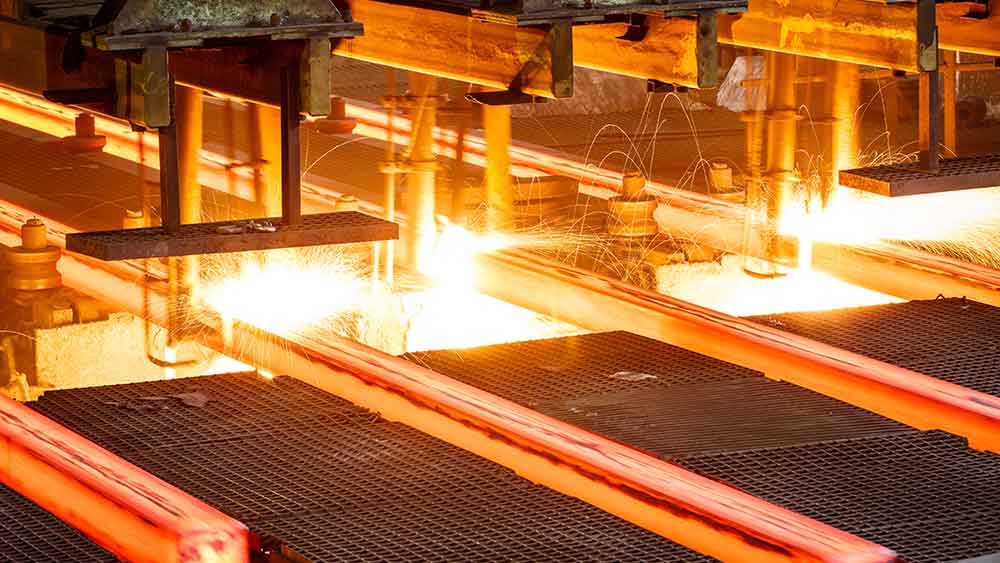Stationary storage is going to be big business.
By 2040, BNEF reckons the global energy storage market will grow to a cumulative 942GW worth about $US620 billion in investment.
Vanadium redox flow batteries (or VRFBs) are expected to grab a big piece of this pie, because they are a perfect fit for large scale stationary storage — even better than lithium-ion in a number of ways.
How much vanadium could these batteries potentially soak up? A lot.
Last year, consultancy Mastermines worked out that the proposed Dalian battery in China (which is the size of a city block) would use roughly 80 per cent of Australian Vanadium’s (ASX:AVL) production for a year.
Now vanadium prices have retreated well off last year’s peak of $US38/lb, VRFBs could kick off in a big way.
But industry analyst Terry Perles says vanadium production – 90 per cent of which is used to strengthen steel — continues to lag demand. This means volatile pricing is set to continue for several years.
“We do believe that once the mills have exhausted the inventories built in late 2018, we’re going to see a significant increase in buying from the Chinese steel mills,” Perles says.
“We do believe that we’re going to see the price very soon move back above this $US15 per pound of V2O5 support level. And we do think that there’s going to be a very turbulent environment.”

Jeremy Read, managing director of explorer Pursuit Minerals (ASX:PUR) says the small-but-growing VRFB market threatens to push the vanadium market further into deficit.
“That component is 3 to 4 per cent of the market and growing at about 60 per cent per year,” Read says.
“That small component can pretty rapidly grow to 10-15 per cent of the market; that represents a new mine’s worth of output.”
So, what can the VRFB sector do to hedge against volatility going forward?
Pricing certainty is key
Ian Prentice, managing director of advanced vanadium player Technology Metals Australia (ASX:TMT) says VRFB uptake relies on two key things.
“One is getting the price to a level where the economics are viable again, and we are now at that point,” says Prentice.
“Two, VRFB companies must be engaging with suppliers — including advanced explorers — around volume and price.”
These batteries can be huge, which is why it’s important to get certainty around supply and pricing.
“If you look at some of the large battery projects over the last few years – they didn’t do this, and that caused those projects to be delayed when the vanadium price ran up,” he says.
“That will be a big driver — the relationships between suppliers and VRFB groups.”
Leasing models for the win
One way to do this is through a vertically integrated model, utilised by producer Bushveld Minerals and its battery subsidiary Bushveld Energy. Australian Vanadium has a similar strategy with its battery subsidiary, VSUN Energy.
This vertical integration means certainty around vanadium supply and consumption once AVL’s flagship vanadium project is in production.
AVL managing director Vince Algar says if battery producers can lease vanadium, or secure its supply at “reasonable” prices, then it makes for very low costs per kWh over the asset life compared to lithium-ion.
The important thing about the leasing model is that it is unaffected by fluctuating vanadium prices. And it allows the producer, battery maker, and financier all to benefit, says Algar.
“The producer receives market prices. The battery maker is then able to sell units with vanadium only as a regular opex lease cost, hence offering a much lower cost of installing the unit,” he told Stockhead.
“The bank [or financier] has a long-life productive asset that generates revenue. This three-way structure will suit installation and financing of very large systems.”
- Subscribe to our daily newsletter
- Join our small cap Facebook group
- Follow us on Facebook or Twitter
VRFB installations are cracking on regardless
There are more than 100 operational vanadium redox flow battery installations globally, and this number is increasing by the day, according to industry group Vanitec.

There have been a number of big announcements on May alone.
In the US, California has launched a four-year pilot project testing the performance of vanadium flow batteries in the commercial wholesale market.
The pilot will provide 2MW/8MWH of storage – enough to power 1000 homes for four hours. A successful outcome could lead to the development of grid-level vanadium storage on a large scale.
In South Africa, vanadium producer Bushveld Minerals’ energy subsidiary, Bushveld Energy, is testing its first utility-scale vanadium redox flow battery (VRFB).
Bushveld Energy reckons VFRB tech is a front-runner to meet South Africa growing need for energy storage. It’s preparing to tender for the massive 360MW/1440MwH battery energy storage systems (BESS) project launched by Eskom, the countries biggest electricity provider.
Most recently, Canadian company Cellcube Energy Storage Systems signed a letter of intent with Pangea Energy to build a grid-level 50MW/200MWh energy storage system in Port Augusta, South Australia.
This is a step change development for the VRFB sector in Australia.
“The Pangea storage project is a wonderful example on how renewable power generation and a safe, reliable and sustainable energy storage technology such as the VRFB are a perfect symbiosis to provide renewable baseload today,” says CellCube chief executive Stefan Schauss.
“Our new high performing CellCube is three times more efficient than any Power-2-X or Hydrogen technology, which will not be available at this scale in the next 3 years.
“CellCube also offers a lifetime support of 25 years with no degradation or augmentation, like needed for lithium.
“This is real, true value for money.”
www.stockhead.com.au

